
Al-Milaha fi Maqala
Your Path to Deeper Insight
- Countries of the World
- Cities and provinces
- Complete Cooking Recipe Index
- Prophets' Stories
- All Countries of the World
- List of surahs in the Holy Qur'an
- Population of world countries by country
- Zip code in Jordan
- Traffic signs in Jordan
- List of world capitals
- International Calling Codes
- Al-Quran Recitations mp3
- List of currencies of the world
- Car Brand Logos and Names
- Jordanian Cuisine Guide
- Country codes names
- 6 Evergreen Content Topics
- World time zones by country
- Country flags of the world with images and names
- List of countries and dependencies by area
- List of countries and dependencies by population
Jerash: The Jewel of the Romans in the Near East
Jerash Governorate (Muhafazat Jerash), historically known as Garasu and Gerasa, is one of the twelve governorates of Jordan, located in the northwestern side of the country, with the city of Jerash as its capital.
Historical Background and Global Significance
Jerash is considered one of the most important preserved archaeological cities in the world. Its settlement history dates back to the Bronze Age (3200–1200 BC).- Founding and Flourishing: The city's story dates back to its founding during the reign of Alexander the Great in the 4th Century BC. The city reached the peak of its prosperity in the 2nd and 3rd centuries AD, was influenced by Roman civilization, and became one of the ten cities in the "Decapolis" league.
- Preservation and Nickname: Jerash is called "Pompeii of the East"Pompeii, also known as Pompéii, is an ancient Roman city in Italy where the eruption of Mount Vesuvius occurred in 79 AD, causing volcanic debris to fall over the city, burying it under 4 to 6 meters (13 to 20 feet) for more than 1,700 years, which perfectly preserved the archaeological remains. It was finally discovered with everything remaining in its original state during that period.
 , not because it was destroyed by a volcano, but because of its excellent and preserved condition after remaining under the sands for centuries. Jerash is today considered one of the largest and best-preserved Roman cities in the Near East, and is listed on the UNESCO World Heritage Tentative List.
, not because it was destroyed by a volcano, but because of its excellent and preserved condition after remaining under the sands for centuries. Jerash is today considered one of the largest and best-preserved Roman cities in the Near East, and is listed on the UNESCO World Heritage Tentative List. - Rediscovery: Although it was devastated by earthquakes in the mid-8th century AD, it was not widely resettled until 1806, when a German archaeologist began excavation work.
Geography, Economy, and Statistics
The Jerash Governorate is distinguished by unique geographical and economic characteristics:- Area and Density: Jerash is the smallest governorate in terms of area in Jordan, yet it has the second-highest population density in the Kingdom after Irbid Governorate, and ranks seventh in terms of population size.
- Agriculture: Jerash is considered one of the richest agricultural areas in Jordan.
- Olives: Many crops are grown here, especially olives, which are used to produce the finest oils pressed locally.
- Roman Trees: Jerash has some of the oldest olive trees in the region, some extending hundreds of years and known locally as the Roman Olive Trees.
- Other Crops: Fruits and grains are also grown, but to a lesser extent.
A Tour of the Archaeological Site (Ancient Gerasa)
The journey to explore the ancient city of Jerash begins with the commemorative monuments located away from the city center:1. Entrance and Sporting Facilities
- Arch of HadrianThe Arch of Hadrian, also known as Hadrian's Gate or the Triumphal Arch, stands as one of the most iconic monuments in the Jordanian city of Jerash. Located at the southern entrance of the city, this triple-arched gateway currently rises to a height of 11 meters, though it originally reached approximately 22 meters when constructed. Evidence suggests it featured wooden doors, and displays unique architectural elements - likely Nabataean influences - including distinctive column base decorations where the capitals were placed at the bottom rather than the top, contrary to conventional design.
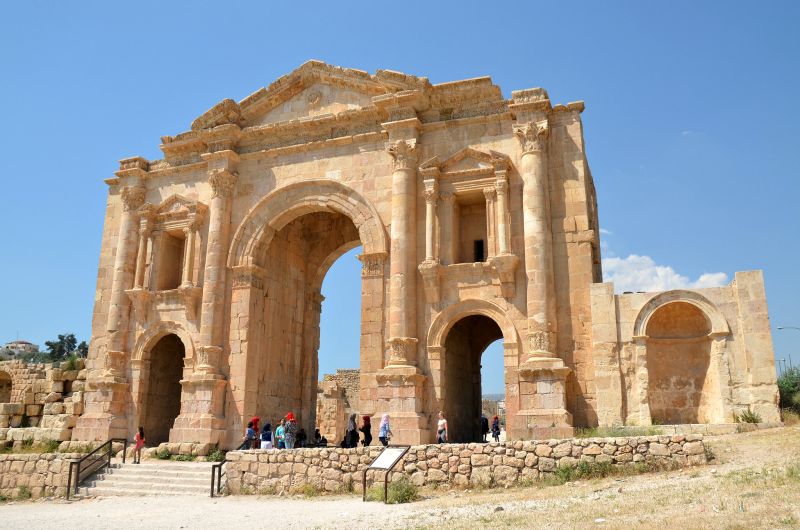 was constructed to honor Emperor Hadrian's visit during the winter of 129/130 AD. It ranks among the largest known arches in the Roman Empire and forms the western entrance to the archaeological site.
was constructed to honor Emperor Hadrian's visit during the winter of 129/130 AD. It ranks among the largest known arches in the Roman Empire and forms the western entrance to the archaeological site. - Hippodrome:The Hippodrome, also known as the Roman Circus, is one of the best-preserved Roman racing arenas in the Middle East. Constructed in the 2nd century AD, it measures approximately 245 meters in length and 52 meters in width, with a seating capacity for over 15,000 spectators. This monumental arena hosted thrilling chariot races, equestrian competitions, and various athletic contests, featuring a distinctive rectangular design with spectator galleries surrounding it on three sides.
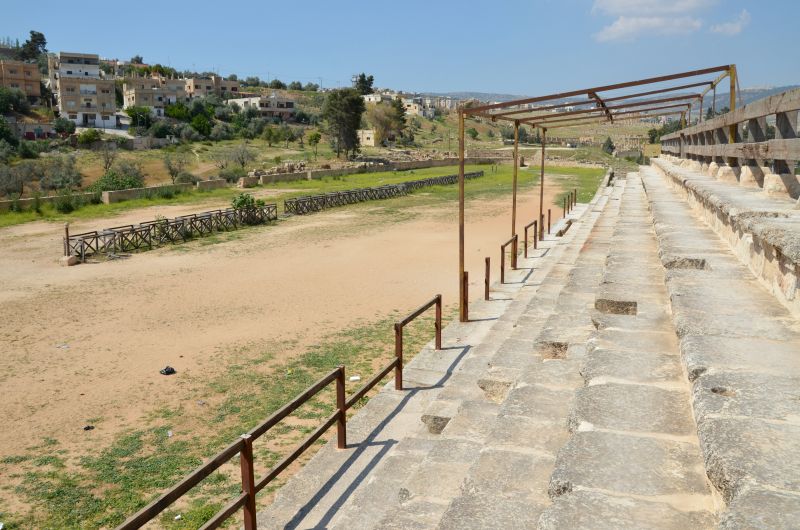 Built in the 3rd century AD, it extends approximately 265 meters in length. Although it is among the smaller known racing arenas, it remains the best-preserved hippodrome in the entire Roman Empire.
Built in the 3rd century AD, it extends approximately 265 meters in length. Although it is among the smaller known racing arenas, it remains the best-preserved hippodrome in the entire Roman Empire.
2. Heart of the City and Main Roads
- The Oval ForumThe Oval Forum stands as one of the most distinctive landmarks of ancient Jerash. Renowned for its unique elliptical shape - a rare feature in Roman architecture - it is flanked by 160 Ionic columns arranged in two symmetrical rows. Constructed in the 1st century AD, it served as a vital connector between the main street (Cardo Maximus) and the Temple of Zeus, functioning as the commercial and social heart of the city.
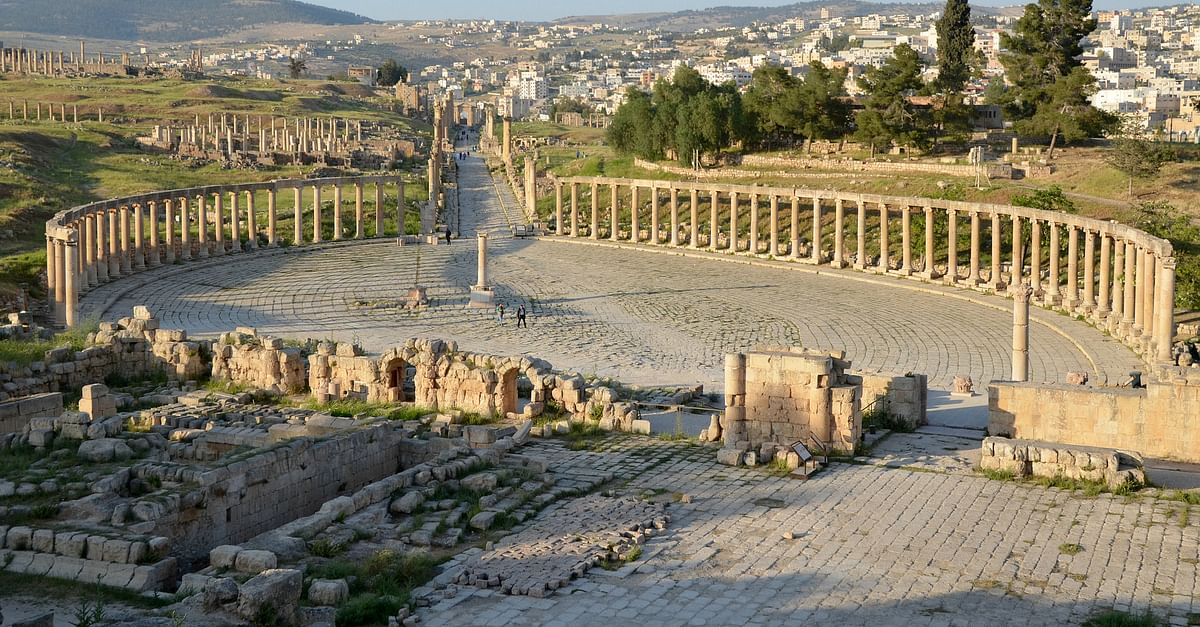 (Oval Forum): Built in the 1st century AD. Distinguished by its unique elliptical shape and lined with 160 Ionic columns, it connects the complex to the main street.
(Oval Forum): Built in the 1st century AD. Distinguished by its unique elliptical shape and lined with 160 Ionic columns, it connects the complex to the main street. - Colonnaded StreetThe Colonnaded Street, known as Cardo Maximus, was the main thoroughfare of Roman Jerash. Stretching 800 meters in length and 12 meters in width, it is bordered by hundreds of massive Corinthian columns that once supported side porticoes. This grand avenue served as the city's commercial and social artery, lined with shops, stalls, and temples, and is considered one of the best-preserved Roman streets in the world.
 (Cardo Maximus): The main paved street that extends from the Oval Forum and runs through Jerash. Surrounded by hundreds of Corinthian columns, the niches and shops behind them indicate the level of commerce that once flourished here.
(Cardo Maximus): The main paved street that extends from the Oval Forum and runs through Jerash. Surrounded by hundreds of Corinthian columns, the niches and shops behind them indicate the level of commerce that once flourished here.
3. Temples and Theatres
- Temple of Zeus: Built around 160 AD, it stands on a prominent hill to be visible to the people. The temple offers the best panoramic views of the ancient city.
- Temple of Artemis: Constructed around 135 AD, it was dedicated to the city's patron goddess. Eleven of the original twelve columns remain standing to this day.
- South Theatre: Built between 90 and 92 AD. It could accommodate 3,000 people across 32 rows of seats, features remarkable acoustic properties, and continues to be used for events today.
- The North TheatreThe North Theatre is one of the principal performance venues in the ancient city of Jerash. Constructed around 165 AD during the Roman period, it originally accommodated approximately 1,600 spectators. The theatre primarily served as an assembly hall for the city council (Boule) and hosted musical and poetic performances, distinguished by its unique architectural design and strategic location in the northern sector of the city near the Damascus Gate.
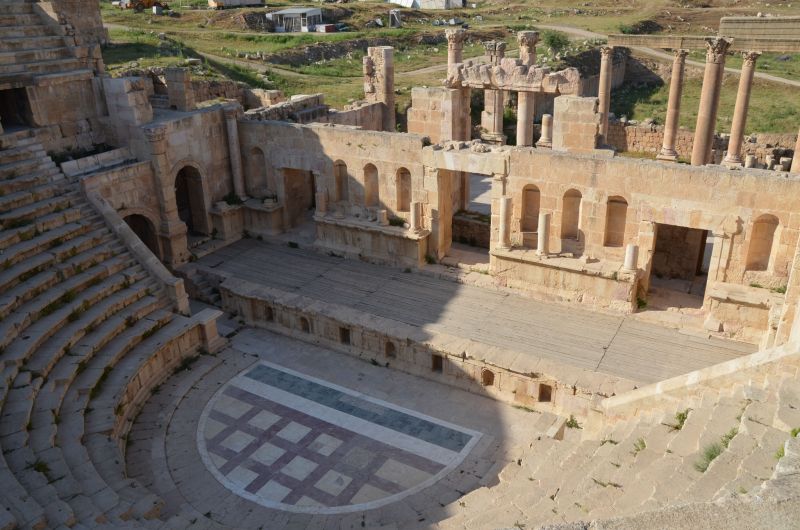 (North Theatre): Built around 160 AD. It accommodated 1,600 seats after its expansion and was originally used as a council hall.
(North Theatre): Built around 160 AD. It accommodated 1,600 seats after its expansion and was originally used as a council hall.
4. Public Facilities and Religious Life
- Nymphaeum (Public Fountain): An ornate public fountain built in 191 AD and dedicated to the water nymphs. Water flowed from the mouths of seven lions, and its sculptural work is considered among the most magnificent and beautiful at the site.
- Presses and Markets: A wine press remained largely intact for 1,800 years. The Eastern Market also housed small shops and stalls.
- Churches: So far, thirteen different churches have been discovered, indicating a thriving Christian community in the 6th century AD, such as the Church of Marianos adorned with a mosaic carpet.
Administrative Division and Towns
All cities, towns, and villages in the Jerash Governorate administratively belong to the Jerash District (*Liwa Qasabat Jarash*), which is the only district within the governorate. Note: The list of towns below has been divided alphabetically to facilitate reading. This division does not imply any official or administrative status.- The First Group: Um Qantara, Um Ramih, Um Al-Zaytun, Aniba, Al-Abarah, Asfour, Alaymun, Amamah, Jerash.
- The Second Group: Al-Junaydiyah, Al-Jazazah, Al-Jubarat, Jumla, Jubba, Jabba, Al-Haziyah, Al-Hadadah, Al-Husayniyat.
- The Third Group: Debbin, Deir Ajloun, Deir Al-Liyat, Al-Raya, Al-Rabwa, Al-Rashaydah, Al-Rahmaniyah, Al-Riyashi, Raymoun, Zuqrit, Sakib.
- The Fourth Group: Al-Sabtah, Souf, Sheikh Mufarrej, Al-Mushayrifa, Al-Mustaba, Al-Majdal, Al-Majar, Al-Mansoura, Marsa', Muqabla, Nihleh, Prophet Hud (Nabi Hud), Najda.
- The Fifth Group: Burma, Balila, Tal'at Al-Ruz, Al-Fayhaa, Al-Fawara, Qurai', Qafqafa, Kufr Khall, Al-Kitta, Al-Kufair, Humta, Al-Houna.
Climate of Jerash Governorate
Jerash Governorate enjoys a Mediterranean climate that is relatively mild, but cold and rainy in winter and hot and dry in summer. Due to its location within the Ajloun Highlands and its forested terrain, Jerash receives a good amount of rainfall and is often among the first areas in Jordan to experience snowfall during winter. Its elevation above sea level also makes it a popular summer tourist destination, where the weather is refreshing compared to the Jordan Valley and southern regions.Jerash Cuisine: Heritage and Olives
The Jerash Governorate boasts a rich cuisine that combines national Jordanian dishes with local traditional meals, reflecting the region's agricultural environment and rural heritage. These dishes are served at major events such as weddings, feasts, and seasons, as well as in daily life. Here are the most prominent traditional dishes famous in the Jerash Governorate:Comprehensive Jordanian Dishes (Main Courses)
- Mansaf:Mansaf
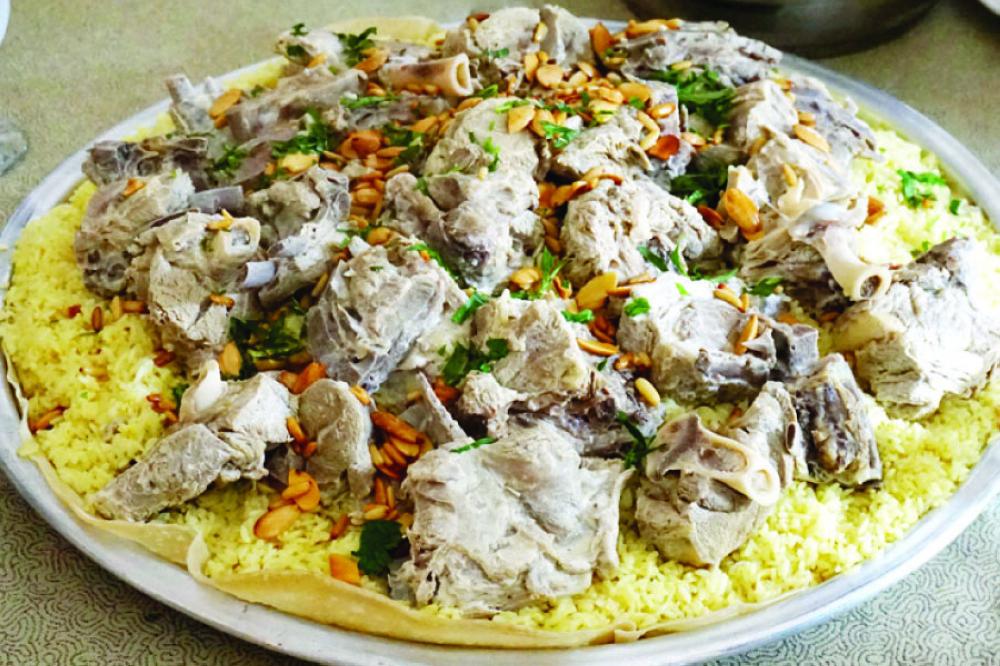 The undisputed national dish of Jordan, prepared using rice and pieces of lamb or goat meat cooked in Jameed (dried fermented yogurt). It is served at large gatherings and banquets.
The undisputed national dish of Jordan, prepared using rice and pieces of lamb or goat meat cooked in Jameed (dried fermented yogurt). It is served at large gatherings and banquets. - Maqluba:Maqluba
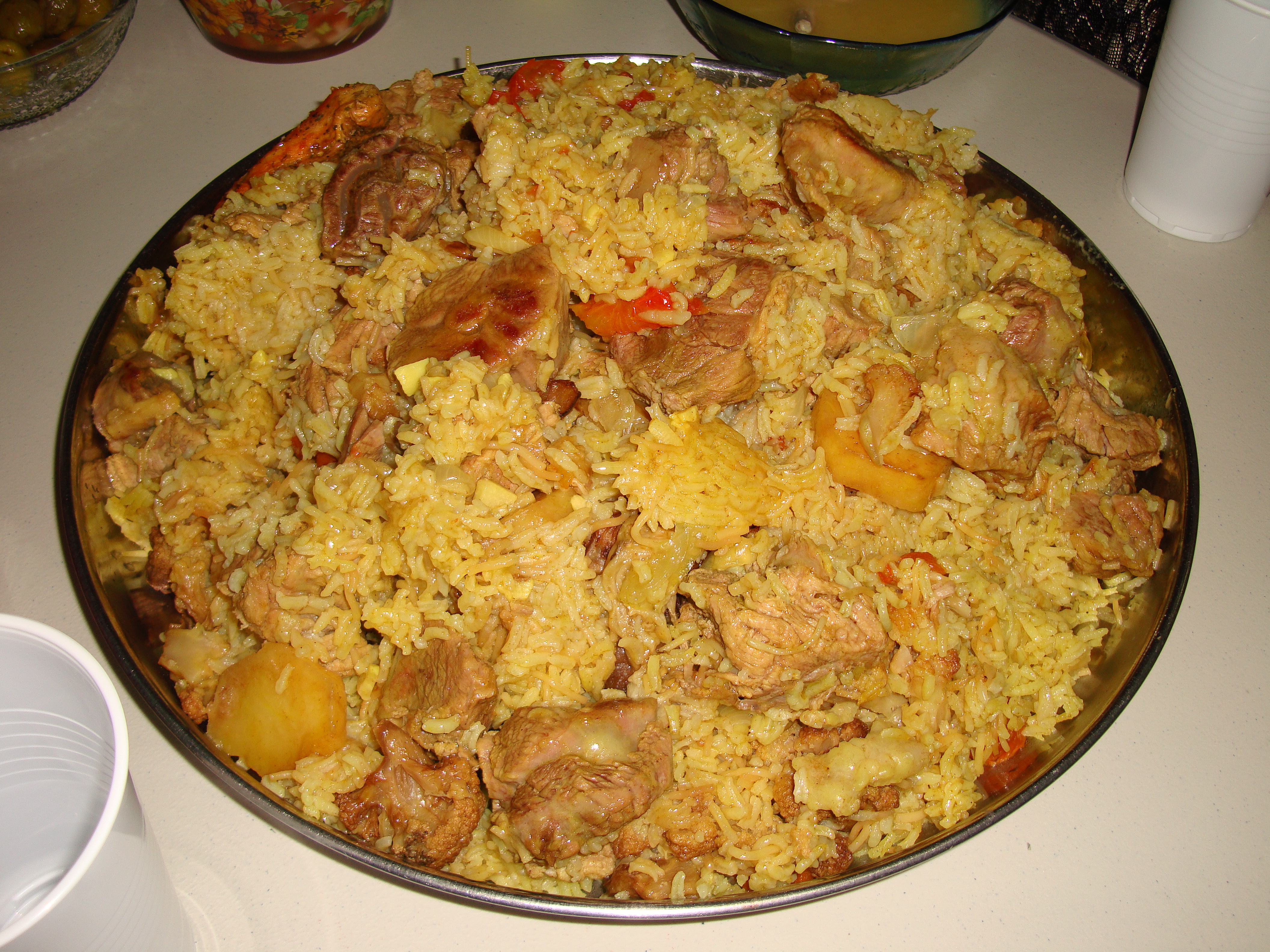 A very common dish, consisting of rice cooked with pieces of meat (often chicken) and fried vegetables such as eggplant, cauliflower, or potatoes. The dish is flipped when served, hence its name ("upside-down").
A very common dish, consisting of rice cooked with pieces of meat (often chicken) and fried vegetables such as eggplant, cauliflower, or potatoes. The dish is flipped when served, hence its name ("upside-down"). - Maftoul (Couscous):Maftoul
 A dish characterized by steamed hand-rolled wheat granules (small balls), served with chicken broth, vegetables, and chickpeas.
A dish characterized by steamed hand-rolled wheat granules (small balls), served with chicken broth, vegetables, and chickpeas. - Dwali (Stuffed Grape Leaves): A dish of stuffed vegetables prepared with a filling of rice and minced meat, cooked in a pot with meat broth or lemon juice, and often served as a main course.
Appetizers, Stuffed Vegetables, and Side Dishes
These dishes are ideal for Jerash's cold, elevated climate during winter:- MakmouraMakmoura
 : Considered a prominent heritage dish in northern Jordan, for which Jerash is particularly famous. It consists of layers of wheat dough stuffed with generous amounts of chopped chicken, minced onions, and local oil (olive oil). These layers are baked together in an oven or *Taboon* for hours until tender and juicy.
: Considered a prominent heritage dish in northern Jordan, for which Jerash is particularly famous. It consists of layers of wheat dough stuffed with generous amounts of chopped chicken, minced onions, and local oil (olive oil). These layers are baked together in an oven or *Taboon* for hours until tender and juicy. - Rashouf: A warm, rich winter dish, primarily composed of cracked lentils cooked with Jameed (dried, salted Karak yogurt) or fresh laban (yogurt). It is typically served with *Taboon* bread.
- MusakhanMusakhan
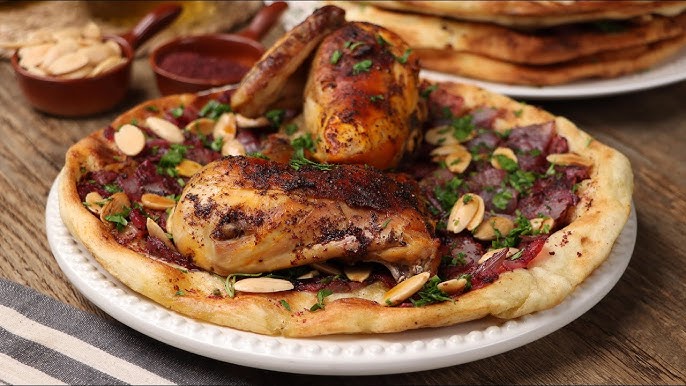 (Rolls): Rolls of Taboon bread stuffed with chicken pieces, onions, and large amounts of sumac, and generously soaked in virgin olive oil. These are common foods in olive-growing regions.
(Rolls): Rolls of Taboon bread stuffed with chicken pieces, onions, and large amounts of sumac, and generously soaked in virgin olive oil. These are common foods in olive-growing regions. - Jordanian Kushari: Different from the Egyptian version, it is prepared from lentils and bulgur cooked with fried onions, and is served as a winter dish.
- Kibbeh (Fried or Grilled): Made from fine bulgur stuffed with meat, onions, and spices, and considered an essential appetizer at feasts.
- Karshat (Kirsat) and Qallayat: Popular dishes cooked from parts of the offal of the slaughtered animal (stomach, intestines, and heart) with tomatoes or garlic.
Baked Goods and Pastries
Baked goods are a vital part of the Jerash table due to the abundance of wheat and olives in the region:- Taboon Bread: An essential bread in Jerash, baked directly on a hot stone inside a traditional oven (*Taboon*). It is often served hot with za'atar and olive oil as part of an authentic rural breakfast.
- Popular Pastries: Pies and baked goods stuffed with local cheese, green za'atar (thyme mixture), or minced onions with olive oil.
Appetizers and Popular Daily Foods in Jerash
- Galayet BandoraGalayet Bandora
 : Tomatoes fried and cooked with onions, olive oil, salt, and chili pepper. It can be served with rice but is more commonly eaten with bread across Jordan and is indispensable for all segments of society in all governorates.
: Tomatoes fried and cooked with onions, olive oil, salt, and chili pepper. It can be served with rice but is more commonly eaten with bread across Jordan and is indispensable for all segments of society in all governorates. - FalafelFalafel
 : Balls of deep-fried chickpea flour and Middle Eastern spices. It is dipped in every *Mezze* (appetizer spread), especially hummus. Jordanian falafel balls tend to be smaller in size.
: Balls of deep-fried chickpea flour and Middle Eastern spices. It is dipped in every *Mezze* (appetizer spread), especially hummus. Jordanian falafel balls tend to be smaller in size. - Hummus and Ful MedamesHummus and Ful Medames
 : Foods typically served for breakfast, especially on Fridays, and also offered as appetizers for lunch and dinner.
: Foods typically served for breakfast, especially on Fridays, and also offered as appetizers for lunch and dinner.
Desserts and Other Products
- Zalabia (Jerash Luqaimat): A very famous traditional popular dessert in the villages of Jerash, especially during events and festivals. These are small balls of fried dough sweetened with Qater (sugar syrup).
- Baklava:Baklava
 A rich and delicious pastry made of thin, crispy layers of phyllo doughPhyllo Pastry
A rich and delicious pastry made of thin, crispy layers of phyllo doughPhyllo Pastry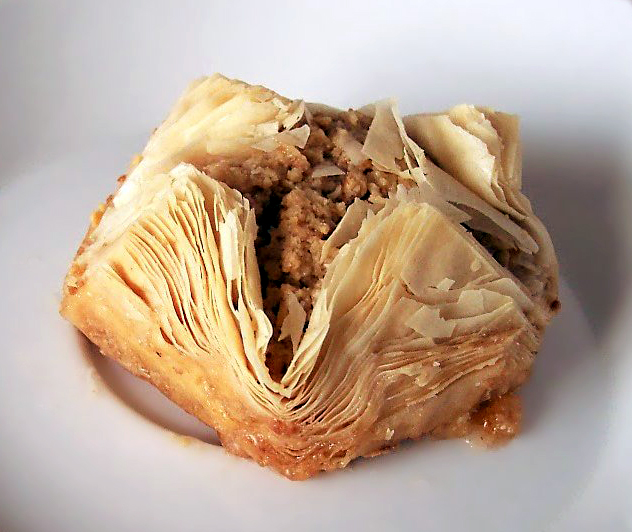 , stuffed with chopped nuts (often pistachios or walnuts), and generously soaked in honey or Qater (simple sugar syrup).
, stuffed with chopped nuts (often pistachios or walnuts), and generously soaked in honey or Qater (simple sugar syrup). - Knafeh:Knafeh
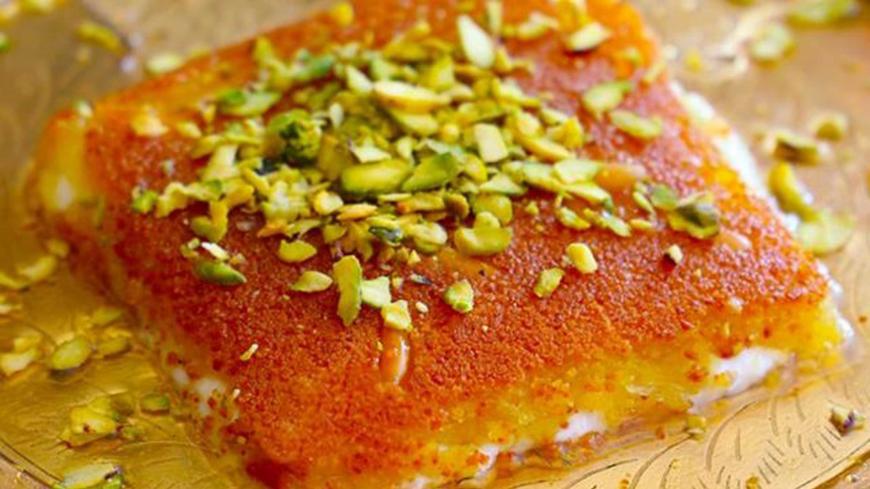 A famous and distinctive Middle Eastern dessert based on cheese. It consists of coarse Knafeh dough or fine semolina threads, layered over soft cheese, and then soaked in a sugar syrup often flavored with rose water.
A famous and distinctive Middle Eastern dessert based on cheese. It consists of coarse Knafeh dough or fine semolina threads, layered over soft cheese, and then soaked in a sugar syrup often flavored with rose water. - Warbat:Warbat
 Thin, triangular pastries made from layers of crispy phyllo dough and stuffed with sweet, smooth cream (or custard). Like Qatayef, Warbat is consumed extensively during the Holy Month of Ramadan.
Thin, triangular pastries made from layers of crispy phyllo dough and stuffed with sweet, smooth cream (or custard). Like Qatayef, Warbat is consumed extensively during the Holy Month of Ramadan. - Qatayef:Qatayef
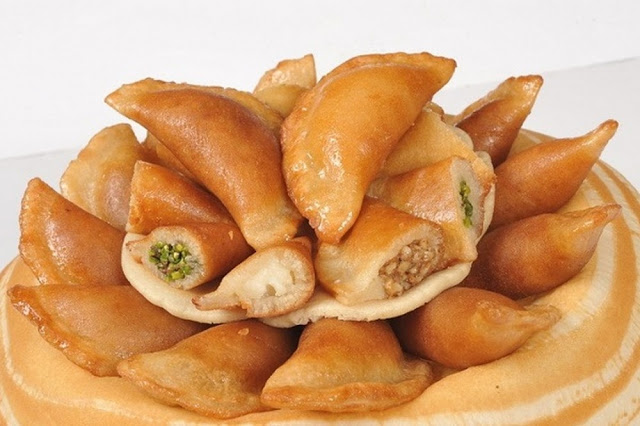 A unique stuffed pancake-like dessert specific to the region. It resembles a folded pancake and is traditionally filled with fresh cream (Qeshta) or ground pistachios. It is a famous dessert consumed mainly during the Holy Month of Ramadan.
A unique stuffed pancake-like dessert specific to the region. It resembles a folded pancake and is traditionally filled with fresh cream (Qeshta) or ground pistachios. It is a famous dessert consumed mainly during the Holy Month of Ramadan. - Homemade Products: Jerash is known for its agricultural and homemade products sold in markets and festivals, such as cured olives of all types, jams, pickles, and natural apple cider vinegar.
Area and Population Density of Jerash Governorate
- Total Area: 410 km². Jerash is considered the **smallest governorate** in Jordan by area.
- Population: Approximately 280,700 people (according to recent estimates). It ranks **seventh** in terms of total population.
- Population Density: Approximately 685 people/km². Jerash records the **second-highest population density** in the Kingdom, after Irbid.
Pompeii (بومبي أو پُمْپِيِي) is an ancient Roman city in Italy, where the volcanic eruption of Mount Vesuvius occurred in 79 AD, causing volcanic debris to fall over the city and it remained buried under 4 to 6 meters (13 to 20 feet) for 1,700 years , which preserved the archaeological remains perfectly, and it was finally discovered with everything remaining in its original state during that period.
Summary: Jerash - Where Roman Heritage Embraces Authentic Jordanian Legacy
Jerash Governorate represents a historical masterpiece that harmoniously blends the grandeur of meticulously preserved Roman antiquities at Hadrian's Arch, theaters, and temples, with the authenticity of local heritage reflected in its rich cuisine, agricultural products - particularly olive oil - and the natural beauty of its green highlands and moderate climate, making it a genuine jewel in Jordan's tourism crown and one of the most significant preserved Roman cities in the Near East.
Keywords: Jerash Governorate, Ancient Jerash, Gerasa, Pompeii of the East, Jerash Antiquities, Arch of Hadrian, South Theatre Jerash, Cardo Maximus, Decapolis, Roman History in Jordan, Temple of Artemis, Jerash Tourism, Jerash Makmoura, Jerash Olive Oil
Related Topics: Irbid | Mafraq | Ajloun | Amman
All Rights Reserved | gpsarab.com - © 2012-2025
Related Topics: Irbid | Mafraq | Ajloun | Amman
All Rights Reserved | gpsarab.com - © 2012-2025
This page has been viewed
10691
times


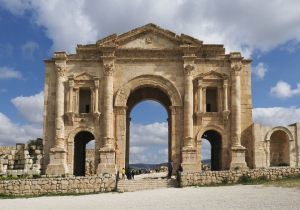
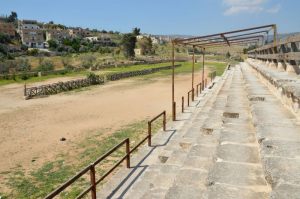
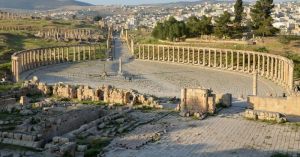
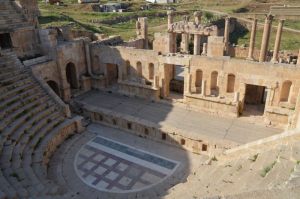
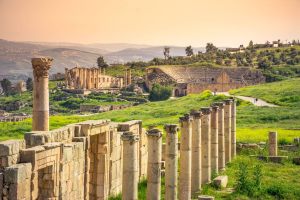

Be the first to comment on this topic!
Leave a Comment